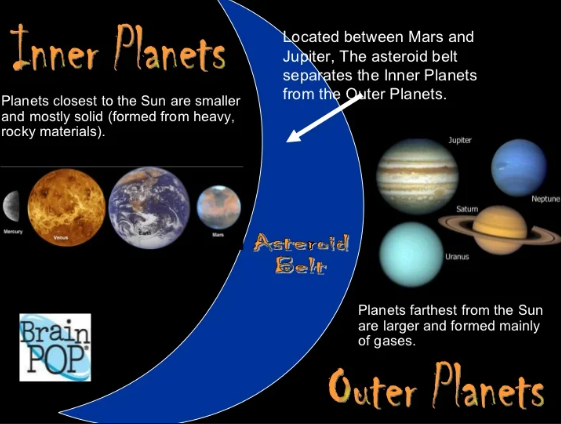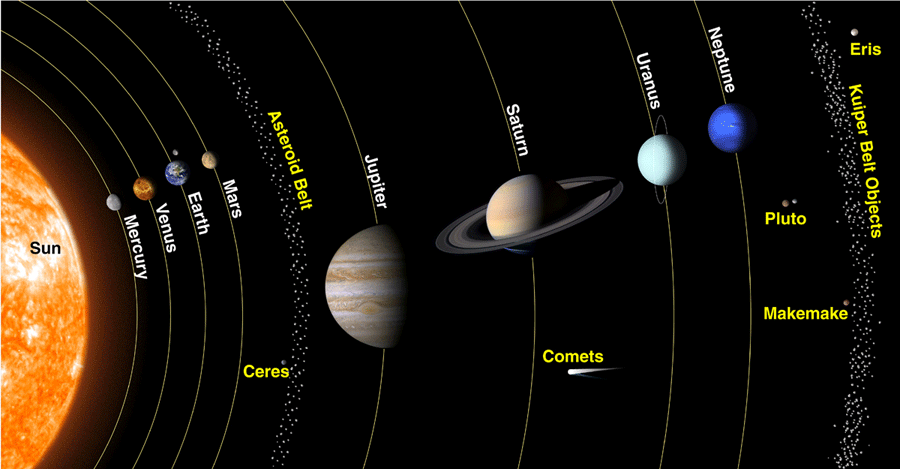What Separates the Inner and Outer Planets: Exploring the Solar System's Divisions
The solar system is a vast expanse of celestial bodies, each with its own unique characteristics. Among these celestial neighbors, a distinct division exists between the inner and outer planets. In this article, we will delve into the factors that separate the inner and outer planets, exploring their differences in composition, location, and other defining features.

What separates the inner and outer planets?
1. Understanding the Inner Planets:
The inner planets, also known as the terrestrial planets, are Mercury, Venus, Earth, and Mars.
These planets are located closer to the Sun and are characterized by their solid, rocky surfaces.
Their proximity to the Sun results in higher temperatures and shorter orbital periods.
2. Exploring the Outer Planets:
In contrast, the outer planets, also known as the gas giants, include Jupiter, Saturn, Uranus, and Neptune. These planets are situated farther from the Sun and are primarily composed of gas, with relatively small rocky cores. The outer planets are much larger in size and have longer orbital periods.
3. Distance from the Sun:
The most significant factor separating the inner and outer planets is their distance from the Sun.
The inner planets are located within the inner region of the solar system, closer to the Sun, while the outer planets reside in the outer reaches of the solar system, at much greater distances from the Sun.
4. Composition and Structure:
Another distinguishing feature is the composition and structure of the inner and outer planets.
The inner planets have solid surfaces consisting of rocks and metals, making them more similar to Earth.
On the other hand, the outer planets are predominantly composed of hydrogen, helium, and other gases, with a smaller rocky core.
5. Size and Mass:
Size and mass are significant factors that differentiate the inner and outer planets.
The outer planets are much larger in size compared to the inner planets, with Jupiter being the largest planet in the solar system.
Their massive size allows them to possess strong gravitational forces, which influences their overall structure and the presence of numerous moons.
6. Moons and Rings:
Speaking of moons, the outer planets tend to have a greater number of moons compared to the inner planets.
For instance, Jupiter has a vast number of moons, including its four largest moons called the Galilean moons.
Furthermore, some outer planets, such as Saturn, are also known for their stunning ring systems, which are composed of numerous small particles orbiting the planet.
7. Atmosphere and Weather:
The atmosphere and weather conditions also differ between the inner and outer planets.
The inner planets have thinner atmospheres compared to the outer planets, and their weather patterns are influenced by factors such as temperature, wind, and the presence of water. In contrast, the outer planets have thick atmospheres filled with various gases, resulting in extreme weather conditions, such as powerful storms and intense winds.
8. Exploration and Discoveries:
Throughout history, both the inner and outer planets have been the subject of scientific exploration and discovery.
The inner planets, being closer to Earth, have been explored in more detail, with missions such as the Mariner and Viking spacecraft providing valuable insights.
However, modern missions, such as the Voyager and Juno missions, have allowed us to gather significant information about the outer planets, revealing their fascinating characteristics and mysteries.
9. Significance in the Solar System:
Both the inner and outer planets play crucial roles in the dynamics of the solar system. The inner planets, with their rocky surfaces and potential for supporting life, offer valuable insights into the conditions necessary for habitability. The outer planets, with their vast sizes and gravitational influence, contribute to the stability and structure of the solar system as a whole.

The inner and outer planets in our solar system
Embracing the Diversity of the Solar System:
In conclusion, the separation between the inner and outer planets is evident in their composition, location, size, and other distinguishing features. While the inner planets resemble Earth in their rocky surfaces, the outer planets captivate us with their massive size, gaseous composition, and intricate systems of moons and rings. Understanding and appreciating the diversity of the solar system enriches our exploration and fuels our curiosity about the vast cosmic wonders that surround us.